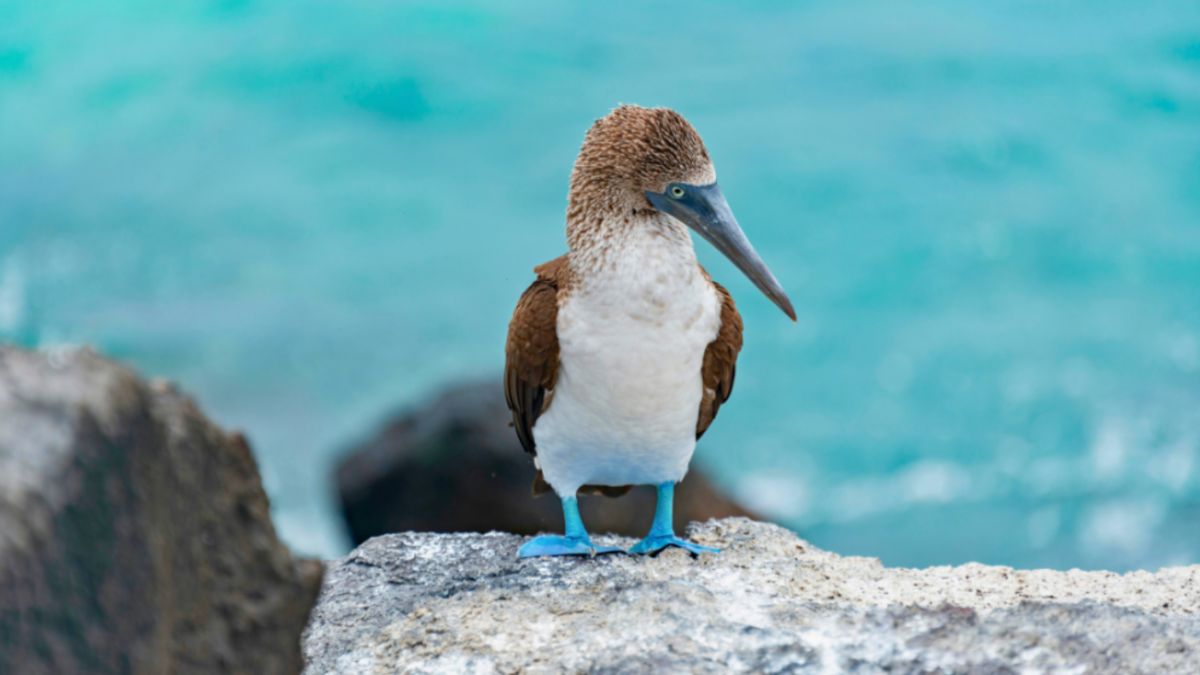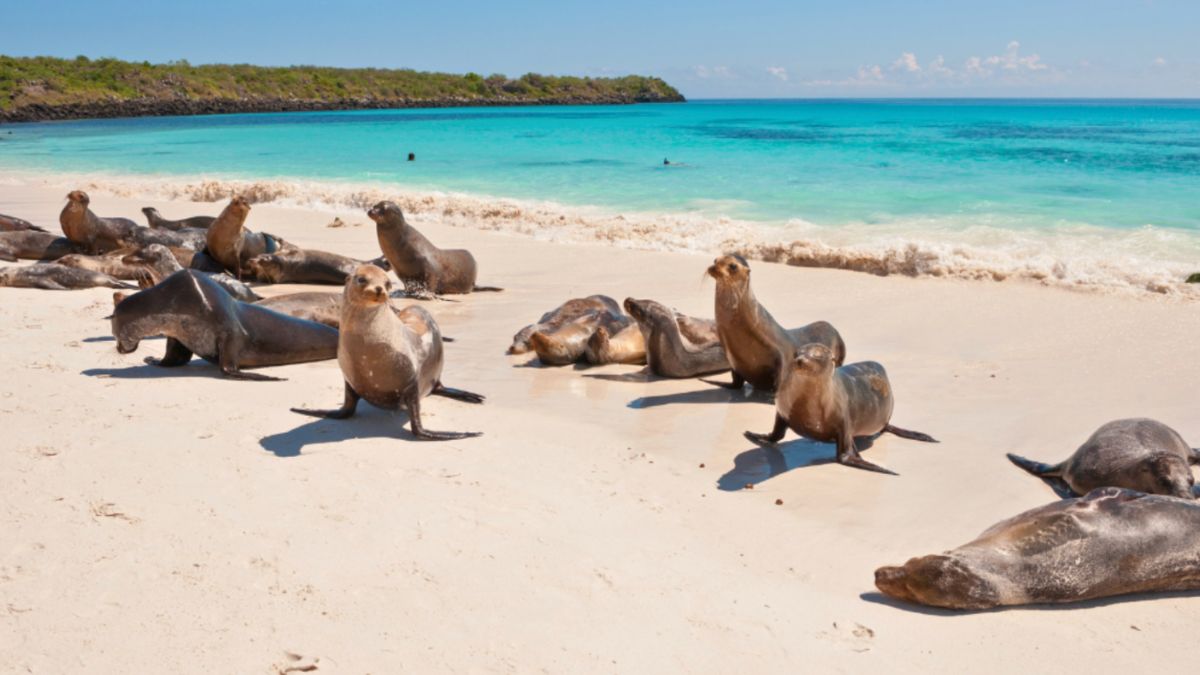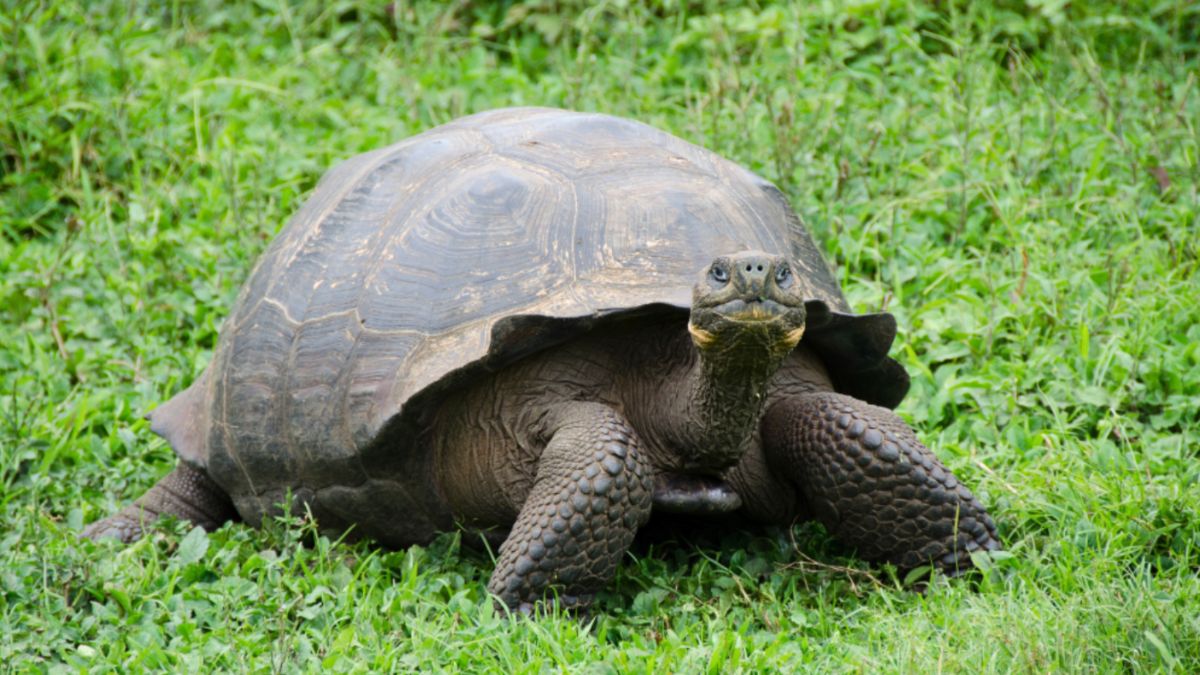15 Incredible Animals to See
in the Galápagos Islands
Witness Incredible Animals
Imagine planning your dream vacation only to discover that the wildlife you’re hoping to see might disappear forever. Many travelers spend thousands of dollars on trips to places where they encounter the same animals they could see in a zoo back home. The frustration of missing out on truly unique wildlife experiences can turn an expensive vacation into a disappointing memory.

At Dorian Destinations, we understand that luxury travelers seek authentic, once-in-a-lifetime encounters with nature’s most remarkable creatures. Our expertly curated Galápagos Islands adventures connect you with wildlife that you cannot find anywhere else on Earth, creating unforgettable memories that justify every dollar of your investment.
Why the Galápagos Islands Are a Wildlife Paradise
The Galápagos Islands are located approximately 600 miles off the coast of Ecuador in the Pacific Ocean. These volcanic islands became famous when Charles Darwin visited them in 1835 and developed his theory of evolution. The isolation of these islands allowed animals to evolve in unique ways over millions of years.
What makes the Galápagos Islands so special is that many animals here exist nowhere else on the planet. Scientists call these “endemic species.” About 80% of land birds, 97% of reptiles and land mammals, and 40-50% of the plants found on the Galápagos Islands live only in this archipelago.
The 15 Most Amazing Animals of the Galápagos Islands
Galápagos Giant Tortoise
The Galápagos Giant Tortoise represents the most famous resident of these islands. These magnificent creatures can live over 100 years and typically weigh 250–300 kg (550–660 lbs), and some can reach up to 417 kg (919 lbs). Each island developed its own subspecies of tortoise with different shell shapes and neck lengths.
You can observe these gentle giants slowly munching on vegetation throughout the day. Their shells tell the story of their island homes — dome-shaped shells belong to tortoises from lush islands, while saddle-shaped shells help tortoises from dry islands reach higher vegetation.
Marine Iguana
Marine iguanas hold the title of being the world’s only seagoing lizard. These prehistoric-looking reptiles dive into the ocean to feed on algae and seaweed. Their black coloration helps them absorb heat from the sun after cold ocean swims.
During mating season, male marine iguanas develop vibrant colors that vary by island. The Española Island populations are known for their striking red and green hues, while those on Fernandina and Isabela islands are primarily black. In Santa Cruz, they often have a reddish-brown color. They can hold their breath underwater for up to 30 minutes while foraging for food on the ocean floor.
Blue-Footed Booby
The Blue-Footed Booby captures hearts with its bright blue feet and amusing mating dance. Males show off their colorful feet to attract females during courtship rituals. The bluer the feet, the healthier and more attractive the bird appears to potential mates.
These skilled divers plunge into the ocean from heights of up to 80 feet to catch fish. Their pointed bills and streamlined bodies make them perfect fishing machines.
Note: While blue-footed boobies are found along the eastern Pacific coasts, the Galápagos Islands host the largest and most accessible populations, offering exceptional viewing opportunities.
Galápagos Sea Lion

Galápagos Sea Lions bring playful energy to beaches throughout the islands. These curious mammals often approach snorkelers and divers, creating magical underwater encounters. Young sea lions love to play and will often swim circles around visitors.
Adult males can weigh up to 550 pounds (250 kg) and establish territories on beaches during the breeding season. Females typically weigh between 60 and 110 pounds (27 to 50 kg) and are more social, often gathering in large groups with their pups.
Galápagos Penguin
The Galápagos Penguin holds the distinction of being the only penguin species found north of the equator. These small penguins thrive in tropical waters, aided by the cool Humboldt Current that flows around the islands.
Standing only 20 inches tall, they are among the smallest penguin species in the world. Their population is small, estimated to be around 1,200 individuals, making them vulnerable to environmental changes such as El Niño. They nest in lava rock crevices and cool caves to escape the equatorial heat.
Land Iguana
Land iguanas display brilliant yellow and orange colors that make them look like living flames. These large reptiles can grow up to three to four feet long, weigh around 13 kg (25 lbs), and live for up to 60 years. They primarily eat prickly pear cactus pads, spines and all.
Charles Darwin described land iguanas as “ugly animals,” but modern visitors find their dragon-like appearance fascinating. They dig burrows up to six feet deep to stay cool during hot days.
Galápagos Hawk
The Galápagos Hawk rules as the only resident predator bird in the islands. These fearless raptors show little fear of humans and often perch close to visitors. They hunt everything from marine iguana hatchlings to sea lion placentas. The average weight of the Galápagos Hawk varies by island due to sexual dimorphism, with males ranging from about 1.86 to 3.5 pounds (844 to 1,578 grams) and females being significantly larger, weighing between 2.2 to 5.7 pounds (1,000 to 2,585 grams). The smallest individuals are found on Marchena Island, while the largest are on Española Island. This species is currently classified as vulnerable, with a reduced population estimated at approximately 130 breeding territories across the islands.
Female hawks practice polyandry, mating with multiple males who help raise the young. This unusual breeding system helps maintain stable populations in the challenging island environment.
Waved Albatross
The Waved Albatross graces Española Island with its presence during the breeding season from April to December. These magnificent seabirds have wingspans reaching up to 8 feet, making them incredible gliders over ocean waves.
Their elaborate courtship dance includes bill circling, sky pointing, and loud honking calls. Once paired, these birds typically mate for life and return to the same nesting site each year.
Darwin’s Finches
Darwin’s Finches comprise 18 different species that helped inspire the theory of evolution. Each species developed different beak shapes and sizes to take advantage of specific food sources. Some crack seeds, others catch insects, and a few even drink blood.
The Vampire Finch on the Wolf and Darwin Islands actually pecks at other birds to drink their blood during dry seasons. Some populations have learned to drink fresh water by standing on the backs of giant tortoises and drinking from their eyes and nostrils, though this behavior remains rare and is not frequently observed.
Meanwhile, the Woodpecker Finch uses cactus spines as tools to extract insects from tree bark.
Flightless Cormorant
The Flightless Cormorant represents one of the most unique adaptations in the bird world. These birds lost their ability to fly over thousands of years because they had no land predators to escape from. Instead, they became incredible swimmers and divers.
Their small, stubby wings help them maneuver underwater while hunting for fish, eels, and octopuses. After swimming, they spread their wings to dry in the sun like other cormorants, even though they lost the ability to fly.
Galápagos Fur Seal
Galápagos Fur Seals prefer rocky coastlines and caves where they can escape the tropical sun. These smaller relatives of sea lions have thicker fur coats that help regulate their body temperature. Males average about 64 kg (140 lbs) while females weigh between 27 and 35 kg (60-75 lbs). They are generally shyer and less social than sea lions, often seeking shaded crevices and rocky habitats. They are more active during cooler evening and nighttime hours.
Unlike their playful sea lion cousins, fur seals tend to be shyer and elusive. They are excellent climbers and can scale steep rocky cliffs to reach shaded resting spots.
Lava Lizard
Lava lizards dart across the volcanic landscape like tiny dragons. Males perform push-ups on prominent rocks to defend their territories and attract mates. Each island has its own species of lava lizard with slightly different colors and patterns.
These small reptiles can detach their tails when grabbed by predators, allowing them to escape while the tail continues moving to distract the threat. The tail eventually grows back, though it never looks quite the same.
Galápagos Snake
Several closely related species and subspecies of Galápagos snakes slither through the islands. These non-venomous constrictors pose no threat to people and actually help control pest populations. They are descendants of snakes that likely arrived on floating vegetation millions of years ago.
The snakes show interesting variations between islands, with some populations growing larger or developing different hunting behaviors. They represent another example of island evolution in action.
Sally Lightfoot Crab
Sally Lightfoot Crabs paint the rocky shorelines with their brilliant red, orange, and yellow colors. These agile crustaceans scurry over wet rocks with incredible speed and precision. Young crabs start black and gradually develop their bright adult colors.
They serve as important cleanup crews along the coastline, feeding on algae, dead fish, and other organic material. Their quick movements and ability to cling to wet rocks make them almost impossible to catch.
Galápagos Mockingbird
Four species of Galápagos Mockingbirds helped inspire Darwin’s thinking about evolution and natural selection. Each island population developed slightly different characteristics over thousands of years. These intelligent birds are curious about humans and often investigate visitors closely.
They are opportunistic feeders and will consume a wide variety of food, including insects and, on rare occasions, scavenged afterbirth.
Wildlife Watching Guidelines
The Galápagos Islands maintain strict rules to protect both visitors and wildlife:
- Stay at least six feet away from all animals
- Never feed wildlife or leave food scraps behind
- Follow designated trails and stay with your naturalist guide
- Take only photographs and leave only footprints
Respecting wildlife behavior and following the guidance of knowledgeable naturalist guides is essential to protecting these fragile ecosystems and ensuring a safe, rewarding experience for all visitors.
Conservation Efforts Protecting These Species
The Galápagos Islands face ongoing conservation challenges from climate change, invasive species, and human impact. Organizations like the Charles Darwin Foundation work tirelessly to protect endemic wildlife through research, education, and habitat restoration.
Tourism plays a crucial role in conservation funding, but it must be carefully managed to minimize negative impacts. Responsible tour operators like Dorian Destinations support conservation efforts while providing unforgettable wildlife experiences.
Frequently Asked Questions
What Is the Best Time to See Baby Animals in the Galápagos Islands?
The ideal time to see baby animals in the Galápagos Islands varies by species, but generally occurs during the warm season from December to May when many animals breed and give birth.
How Close Can You Get to the Animals?
You can get remarkably close to animals in the Galápagos Islands, but visitors must maintain a minimum distance of six feet from all wildlife to protect both animals and people.
Are Animals in the Galápagos Islands Dangerous to Humans?
The animals in the Galápagos Islands are not dangerous to humans, as most species evolved without natural predators and show little fear of people when approached respectfully.
How Many Days Do You Need to See All These Animals?
You need at least 5-7 days to see most of these incredible animals in the Galápagos Islands, though longer trips allow for more diverse experiences and better wildlife photography opportunities.
Can You Touch the Animals?
You cannot and should not touch any animals in the Galápagos Islands, as this is strictly prohibited to protect wildlife health and maintain their natural behaviors.
Luxury Galápagos Islands Experiences

The Galápagos Islands offer wildlife encounters unlike anywhere else on Earth. These 15 incredible animals represent millions of years of evolution in isolation, creating a diversity of species, many of which are found nowhere else on our planet. From swimming with playful sea lions to watching giant tortoises navigate their ancient world, every encounter offers the chance to create lasting memories.
At Dorian Destinations, we craft luxury Galápagos Islands experiences that bring you face-to-face with evolution itself. Our carefully planned itineraries maximize your wildlife viewing opportunities while supporting conservation efforts that protect these remarkable creatures for future generations. Let us help turn your dream of seeing these unique animals into a once-in-a-lifetime journey.
Dorian Destinations
(305) 440-9200


